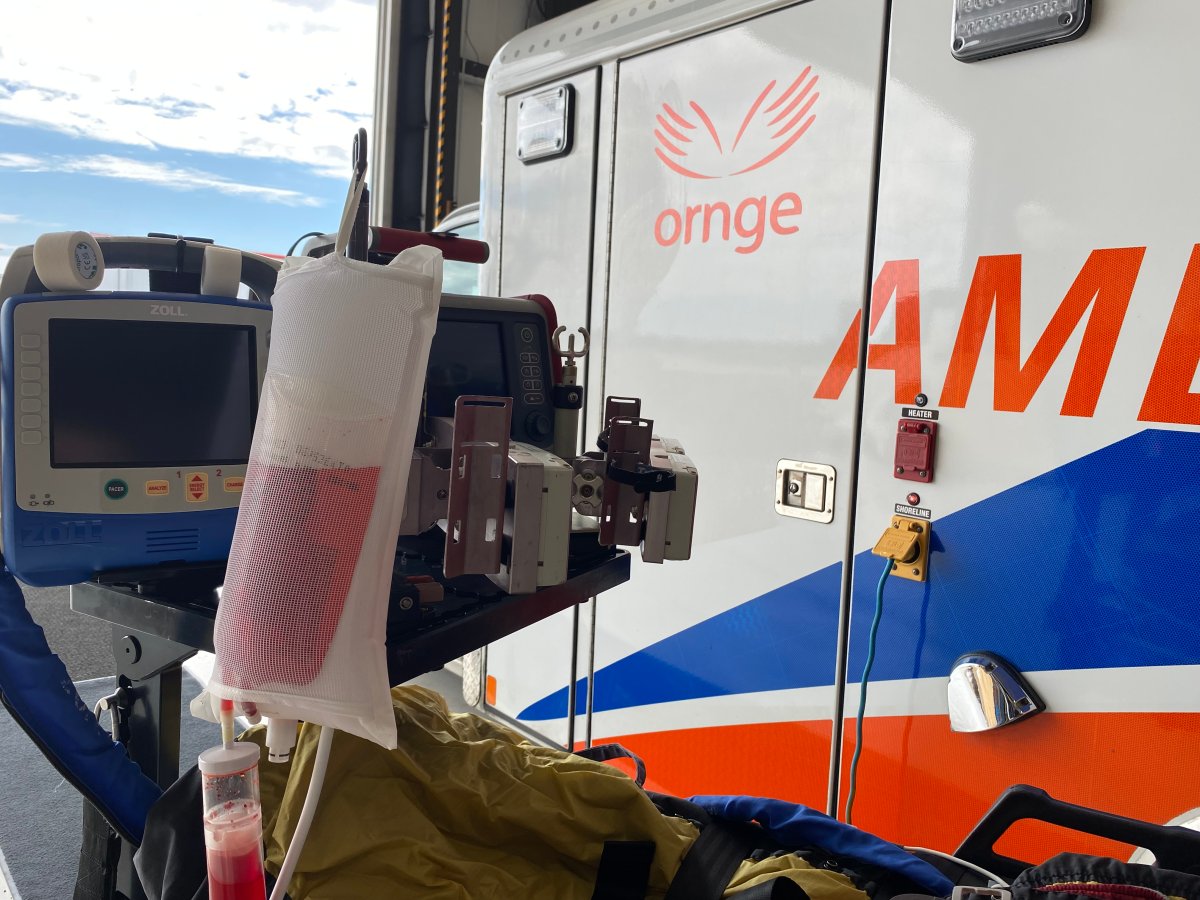London Health Sciences Centre and Ornge have partnered to provide patients with life-saving transfusions en route to the hospital.

Since the April 24 launch of the Blood on Board program in southern Ontario, two patients have already been saved by immediate transfusions.
En-route transfusions significantly improve patients’ outcomes since they no longer need to wait until they are in the hospital to receive blood. Each Ornge helicopter, ambulance and plane is equipped with a specialized cooler designed for the storage and transport of blood, to keep it within a certain temperature and ready for transfusion as needed. Within these coolers, there are several bags of O-negative blood.
After the blood is taken out of the cooler for use, it passes through a separate warmer to help prevent shock in a patient by warming the body from the inside out. If the blood is not at the correct temperature, the module will notify the paramedic before it is used.
“O-negative blood is used in the coolers because it is universal and we don’t have access to equipment that confirms a patient’s blood type in these emergency situations,” says Michael Peddle, associate medical officer at Ornge. “Trauma patients across southern Ontario have an opportunity to receive blood products quickly at a time when every minute counts.”

Get weekly health news
Before the Blood on Board program, critical care paramedics would need to stop by the nearest hospital to access its blood bank when transfusions were needed, which in turn depleted those hospitals’ blood bank supply for local patients.
“Most of the patients we’re transporting in these acute, traumatic situations are patients who can really only be ‘cured’ with surgery,” says Andrew Hamilton, critical care paramedic with Ornge. “Being able to take them from scenes or small communities and bring them right away without having to stop and require blood products gets them where they need to be and gets them care that much quicker.
Ontario’s first Blood on Board program was a partnership between Ornge and Sunnybrook Health Sciences Centre in Toronto and was launched in 2021. Ornge previously expanded the program to Thunder Bay in April 2023 to improve access for rural and remote patients. More than 250 units of blood have been administered since the launch of the program.
“If you need blood products, you typically need them immediately. They’re life-saving products, so being able to give blood en route is a life-saving measure,” says John French, LHSC clinical diagnostics executive. “This is a true team effort that will ultimately lead to improved outcomes for patients.”















Comments